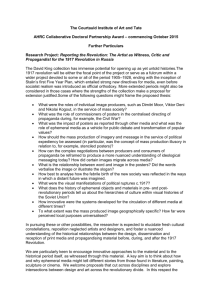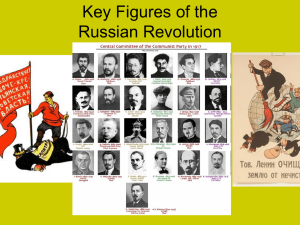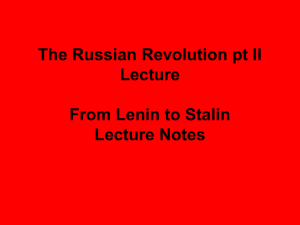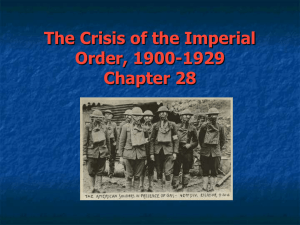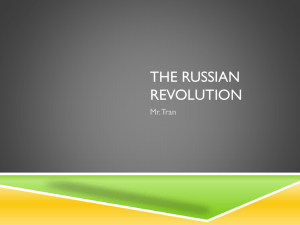How far do you agree that the 1905 Revolution was the most
advertisement
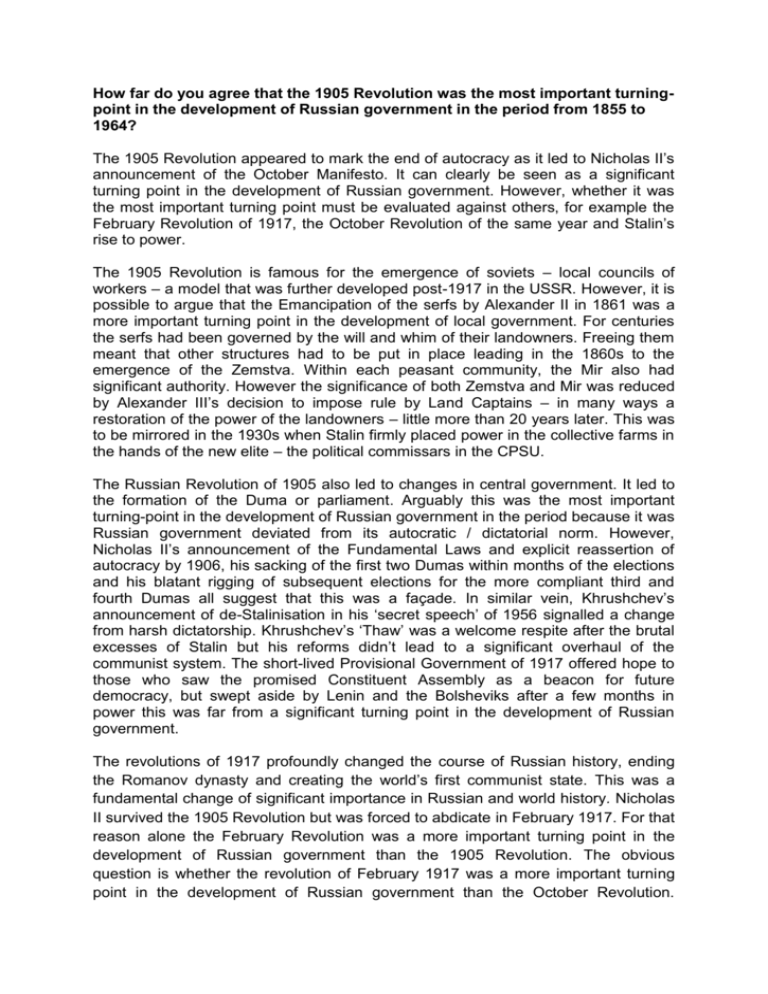
How far do you agree that the 1905 Revolution was the most important turningpoint in the development of Russian government in the period from 1855 to 1964? The 1905 Revolution appeared to mark the end of autocracy as it led to Nicholas II’s announcement of the October Manifesto. It can clearly be seen as a significant turning point in the development of Russian government. However, whether it was the most important turning point must be evaluated against others, for example the February Revolution of 1917, the October Revolution of the same year and Stalin’s rise to power. The 1905 Revolution is famous for the emergence of soviets – local councils of workers – a model that was further developed post-1917 in the USSR. However, it is possible to argue that the Emancipation of the serfs by Alexander II in 1861 was a more important turning point in the development of local government. For centuries the serfs had been governed by the will and whim of their landowners. Freeing them meant that other structures had to be put in place leading in the 1860s to the emergence of the Zemstva. Within each peasant community, the Mir also had significant authority. However the significance of both Zemstva and Mir was reduced by Alexander III’s decision to impose rule by Land Captains – in many ways a restoration of the power of the landowners – little more than 20 years later. This was to be mirrored in the 1930s when Stalin firmly placed power in the collective farms in the hands of the new elite – the political commissars in the CPSU. The Russian Revolution of 1905 also led to changes in central government. It led to the formation of the Duma or parliament. Arguably this was the most important turning-point in the development of Russian government in the period because it was Russian government deviated from its autocratic / dictatorial norm. However, Nicholas II’s announcement of the Fundamental Laws and explicit reassertion of autocracy by 1906, his sacking of the first two Dumas within months of the elections and his blatant rigging of subsequent elections for the more compliant third and fourth Dumas all suggest that this was a façade. In similar vein, Khrushchev’s announcement of de-Stalinisation in his ‘secret speech’ of 1956 signalled a change from harsh dictatorship. Khrushchev’s ‘Thaw’ was a welcome respite after the brutal excesses of Stalin but his reforms didn’t lead to a significant overhaul of the communist system. The short-lived Provisional Government of 1917 offered hope to those who saw the promised Constituent Assembly as a beacon for future democracy, but swept aside by Lenin and the Bolsheviks after a few months in power this was far from a significant turning point in the development of Russian government. The revolutions of 1917 profoundly changed the course of Russian history, ending the Romanov dynasty and creating the world’s first communist state. This was a fundamental change of significant importance in Russian and world history. Nicholas II survived the 1905 Revolution but was forced to abdicate in February 1917. For that reason alone the February Revolution was a more important turning point in the development of Russian government than the 1905 Revolution. The obvious question is whether the revolution of February 1917 was a more important turning point in the development of Russian government than the October Revolution. February ended over 300 years of Romanov rule. In doing so, it created the power vacuum which Lenin’s Bolsheviks would fill in October. The introduction by Lenin of the dictatorship of the proletariat and banning of all other political parties meant that autocracy was replaced by a far more effective version of dictatorship. The Twentieth Century would ultimately see both the rise and fall of totalitarian Marxism, but by 1964 a significant part of the world was communist and predominantly under the direct influence of the USSR. Looked at this way it is hard not to argue that the October Revolution of 1917 was of huge significance in the development of government, both in Russia and in all the communist countries that consequently emerged. So, was the October Revolution of 1917 the most important turning point in the development of Russian government in the period 1855 – 1964? The counterargument is that much of what happened post-1917 was influenced more by Stalin’s rise to power after Lenin’s death in 1924 than it was by the triumph of Bolshevism in 1917. Many historians believe it was Stalin’s betrayal of the principles of the revolution that ultimately led to what Lynch has described as ‘the replacement of one form of state authoritarianism by another’. It is impossible to deny that Stalin’s acquisition of total power had a huge impact as the countless victims of dekulakisation, the terror, the gulags and the Show Trials could testify. As Khrushchev admitted in 1956 under Stalin ‘Soviet citizens came to fear their own shadows’. However, since the opening up of the old Soviet archives following the collapse of communism the extent to which Lenin’s replacement by Stalin marked a significant turning point has been challenged. Many historians now claim that Stalinism grew directly out of Leninism. Pipes states that: ‘Every ingredient of Stalinism save one – murdering fellow communists – Stalin learned from Lenin and that includes mass terror’. The post-Soviet Russian historian, Volkogonov, writing in 1994, agrees: ‘Everything done in Russia after Lenin’s death was done according to his blueprint’. The main apparent turning point in the development of Russian government in Stalin’s period in power was the 1936 Constitution. The constitution repealed restrictions on voting, replaced open with secret voting and added universal direct suffrage to rights guaranteed by the previous Soviet constitution. However this is universally regarded as shameless propaganda. As Schapiro has argued, ‘The decision to alter the electoral system was a measure of the confidence of the Communist party in its ability to ensure the return of candidates of its own choice’. The 1936 Constitution had far less impact on the development of Russian government than the October Manifesto that emerged from the 1905 Revolution. In conclusion the 1905 Revolution was not the most important turning-point in the development of Russian government in this period. 1917 with its twin revolutions that swept away the Romanov dynasty which had ruled Russia since 1613 and turned Russia into the world’s first communist state overshadows all other turning points in the period. Within 1917, the October Revolution and the onset of the ‘dictatorship of the proletariat’ was the most important turning-point in the development of Russian government in the period from 1855 to 1956.


